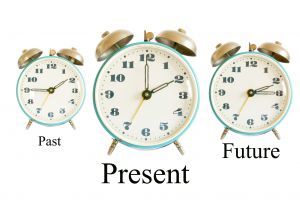Bright and Shiny Objects, One Speed Ponies, & Time Travel
 Pieces have been chosen. Dates have been set. Arrangements have been made. Yep, we are working toward the college Spring Recital and pre-college end of the year piano exams and programs all right. Nearly everyone who walked in the door had issues with rhythm in the last couple of weeks. Cosmic unity, sunspots, the after effects of flu???? Whatever the reason, I found myself talking a lot about musical bones and bodily bones and the gooey mess that happens without them.
Pieces have been chosen. Dates have been set. Arrangements have been made. Yep, we are working toward the college Spring Recital and pre-college end of the year piano exams and programs all right. Nearly everyone who walked in the door had issues with rhythm in the last couple of weeks. Cosmic unity, sunspots, the after effects of flu???? Whatever the reason, I found myself talking a lot about musical bones and bodily bones and the gooey mess that happens without them.
So, this weekend, as I was pulling my dead and critically damaged plants out of their pots and the ground (17 degrees was apparently equal to instant death for many of my pretties including a Ficus I have nurtured for 30+ years and have you ever seen the gooey mess that happens when a cactus freezes completely???), I started thinking about rhythmic issues and their possible origins.
As many of you know, I have occasionally referred to myself as the Queen of Transfer Students (see my Essential Skills for the Developing Pianist parts 1, 2, & 3). It is a great joy to help students attain the next level in their musical journeys. The downside is that you also inherit the questionable habits—baggage, if you like—that come along with each student.
Rhythm is one of the largest and most persistent sources of pianistic baggage I have ever encountered. When the components of rhythmic structure have not been attended to as a student progresses, it can be nearly impossible to move forward. It is like hitting the proverbial brick wall. So, here are some what I believe to be the origins, symptoms, and cures of many rhythmic gooey messes.
Mess: Distraction By The Bright And Shiny
Symptom: Rhythmic integrity fails when technique, reading and the experience of the sounds in the ear come first and rhythm is imposed second. Don’t think only music readers have this trouble. Those who learned by ear, particularly in the elementary and early intermediate years also encounter this distraction when they begin to read.
Cure 1: Equal emphasis on pitches and rhythm from the get-go, by ear or by eye. I tell my students they only got 50% correct on their piece when the pitches are right but the rhythm is all over the place. They are usually shocked. Of course, with beginners and those who have real trouble keeping a beat you need to have reasonable expectations which you raise as the student gains mastery.
Cure 2: Don’t practice too fast. Be sure the notes and the beat can be attended to simultaneously.
Cure 3: Be sure the music is not too challenging- especially difficult with a newer transfer student. I give my new transfers music on several levels at first and be sure they know that this is so we can get to know each other.
Mess: One Speed Pony
Symptom: There is plenty of rhythmic integrity but only one speed for everything. Interestingly, some may be fast ponies, some slow, some medium. It doesn’t seem to have anything to do with the actual tempo used- just that there is only one. Usually those who have this trouble cannot manage a ritard, a tempo, fermata, or simple rubato either. I personally think in some cases that this has something to do with the nervous systems of those affected. I know that when I practice with the metronome there are sometimes tempos that I simply cannot achieve. I can accurately play both faster and slower than that tempo with the metronome so it is not a personal limit of any kind. (Cue the music for Twilight Zone here…)
Cure 1: A short passage assigned each week to be played at several different tempi with the metronome. At first the assigned tempi need to be highly contrasted for success.
Cure 2: Clap along to recorded music for 15 minutes daily. The tempi need to be varied and someone with real difficulty may need to clap along to various metronome tempi first before being let loose on actual music. Supervision by someone who can reliably keep a beat at many tempi may be needed for this activity.
Cure 3: Patience and perhaps Yoga or Meditation. Alternatively, one way ticket to a tropical destination of your choice.
Mess: Time Travel
Symptoms: Loss of rhythmic integrity due to shifting subdivisions, sudden rhythmic complications over a patterned accompaniment, dynamic changes, and changing meters. Music may be sped up when the dynamic is louder and slowed when softer.
Cure 1: Develop a sense of music as it happens in time. Those who are in Band, Choir, and Orchestra know that musical time passes at the same rate for all those in the ensemble despite the fact that the individual parts differ. They know that if they speed up time (rush or cheat on rests or long notes) they will be done before everybody else and effectively have leaped forward in time. Conversely, if they slow down, add beats, or hesitate they will still be playing when everyone else is done- effectively going back in time. Some pianists regularly manage to avoid this reality and time travel freely and often.
Cure 2: Write in the counts, with subdivisions between the two staves right over or under the pitches as they occur rather than in a straight line. Use large numbers or symbols when the hands play together. This helps reinforce the concept that the two parts (hands) are participating in a whole and moving through time together. It also sets up future success in managing multiple voices. I use the example that between 8 and 9 am, one person in the family could be in Math class, another driving to work, and a third sleeping in, but, it is the same 8-9 am for everybody.
Cure 3: Dose of One Speed Pony: Cure 1. Add dynamics to the mix. Pair slow with loud and fast with soft. Once this is mastered mix ritardandos with crescendos and accelerandos with decrescendos.
Cure 4: Call NASA and tell them you have found the secret to time travel or maybe parallel universes.

What a wonderful post! And so many wonderful, and witty, ideas to help tackle this humongous problem. I am very new to teaching but have discovered so much difficulty with rhythm in just about every young musician (and some older ones) that I work with. I happen to love rhythm so it’s difficult for me to understand the problem and to help others. I love your comparison with rhythm to bone structure – perfect! I am going to use that in my own teaching/coaching, if you don’t mind!
Thank you again and I look forward to reading more.
-Erica